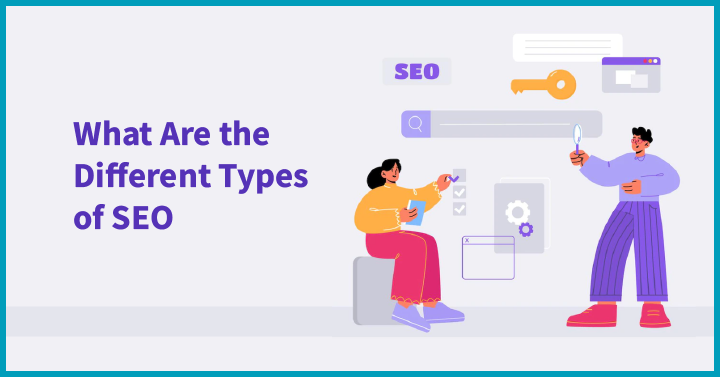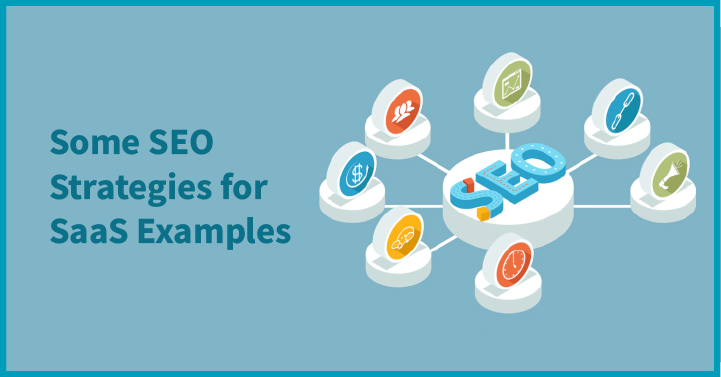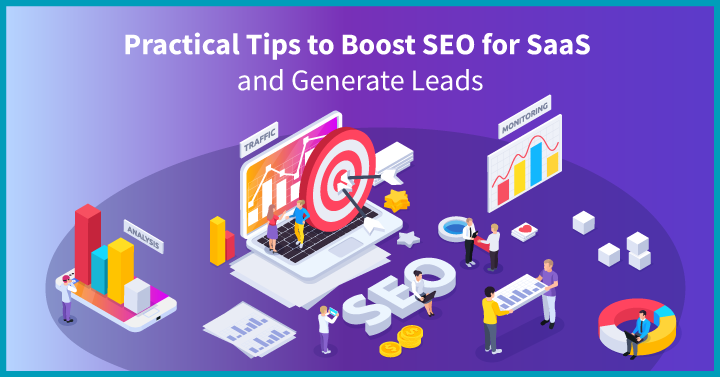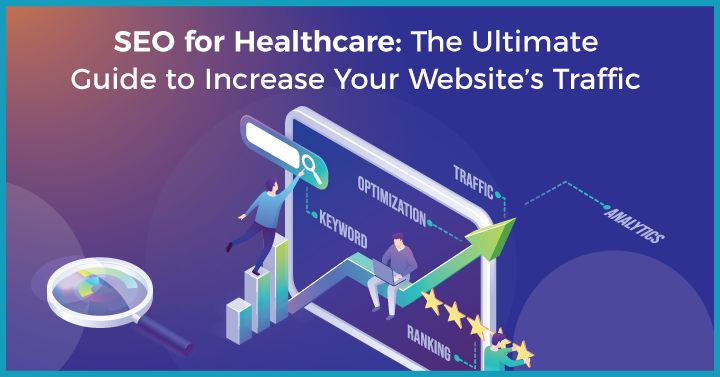A well thought out strategy in SEO for SaaS companies is vital for growth, organically driving new business to your website. While formulating an overarching plan can seem daunting, the whole task becomes a lot easier if you break it down into a handful of key considerations that need to be addressed.
This guide will help you get started on implementing the best SEO practices for your SaaS organization.
Also, To read about our in-depth article that covers it all on digital marketing for SaaS, click here.
1. Why is B2B SEO important for SaaS?
B2B SEO is important for SaaS businesses because it helps build brand awareness and generate sales growth. Ensuring your SaaS offering appears top in results pages keeps your software front of mind with potential customers and reduces your reliance on paid ads.
2. Benefits of SEO for SaaS Businesses
It’s impossible to overstate how important SEO is for a SaaS business that wants to acquire more customers. Savvy SEO will funnel search engine users looking to purchase SaaS software towards your website. While paid ads can be useful to temporarily boost interest, an SEO strategy for SaaS leads to exponential growth in page views at a lower cost per acquisition.
3. What Are SEO Tools for SaaS?
Google Analytics is a good general tool for tracking traffic and conversions, but Google Search Console is designed specifically to help companies optimize content’s SERP rankings and fix indexing issues.
There are also a number of SEO specialists that are popular with the SaaS industry, including Ahrefs and Semrush, both of which boast a complete set of tools that feature site audits, keyword research and backlink analysis.
4. What Are the Different Types of SEO?

Your SEO for SaaS strategy will be made up of several different types, each of which entails its own set of actions.
- Technical
Technical SEO concerns the setup of your site to meet the requirements of today’s search engines, so that you rank higher in SERPs (search engine results pages). Some common aspects of this include: making sure your site is secure (i.e., having an SSL certificate), loads quickly and is mobile optimized; removing duplicate content; and having an XML sitemap to ensure your site is regularly crawled and fully indexed by search engines.
You can use SEO tools to audit your website for many of these technical issues, which can negatively impact your lead generation. For example, Powered By Search found that one of their clients struggled to reach the first page on Google Search due to a 55% score for technical site health.
- On-Page
Also known as on-site SEO, on-page SEO focuses on optimizing content that’s on your website to make sure you’re getting the most relevant visits possible. This is not only important for your company to engage potential clients, but also influences the priority search engines give your pages. If the bounce rate is high and the dwell time is low, then you’re clearly not connecting with the right audience, so sites like Google will push your pages lower down the SERP.
Databox found that simple on-page practices like improving keywords were most often described as the fastest way to improve SEO. Make sure you are also paying attention to things like title codes in the HTML and image alt text.
- Content
Which keywords and how many keywords to choose for SEO is also an important factor for content creation. These will then play a part in how you plan your article production, from product pages and usage guides, to blog posts and listicles. Via keyword research, you’ll be able to discover what type of content is most successful for different target phrases.
Initially, your content will probably focus on describing your product, its benefits and FAQs regarding utility. Once you have these pillars, however, it’s still necessary to keep new content coming in, as this both increases organic traffic and builds brand awareness.
- Off-Page
Off-page can be one of the most challenging parts of SEO for SaaS because it relies on people or businesses outside of your control backlinking to your website – and they will probably only do that if you already rank highly on SERPs or have an established reputation as a trustworthy source. What a backlink in SEO does is show that your content is valued, thereby playing into things like Google’s PageRank algorithm.
Aside from creating comprehensive, compelling content, some common ways to improve off-site SEO are to reach out to content creators or blogs to ask them to backlink to you. You can also post links to your articles on social media to foster link building.
- Local
Local SEO is about targeting the potential customers in your local area. This is done through online directories, creating a Google My Business listing and geo-specific keywords. For SaaS brands, this is not always the most intuitive way to go about improving SEO because SaaS is, by definition, delivered digitally rather than physically.
Even though one-third of online consumers in the US search for local business daily, according to a 2021 Statista report, those people are mostly looking for the nearest pizza takeaway or computer repair shop. People very rarely specify they are looking for cloud-hosted software that is headquartered near their office, though having a listed location is obviously beneficial for authenticity reasons.
- Mobile
Since 2018, when Google announced it would be introducing mobile-first indexing, mobile SEO has been an essential consideration. Google does, in fact, lay out fairly clearly its dos and don’ts for mobile indexing best practices, including ensuring that both content and structured data are the same on desktop and mobile (i.e., you haven’t created different versions for different platforms).
Since the majority of internet usage globally now comes via mobiles, it makes sense in any case to improve things like site load time and to remove pop-ups that are difficult to close on a smartphone.
5. 10 Ways to Boost SEO for SaaS:
5.1 Define SEO KPIs to Measure Progress
Setting KPIs when undertaking an SEO for SaaS provides a means to track how well your implemented changes are translating into tangible growth. These might relate to revenue, conversion rate or organic traffic.
As well as giving you something to benchmark your progress against, KPIs can help you analyze the strengths and weaknesses in your approach – where are you achieving your goals and where are you falling short? Any issues can then be addressed.
For example, a KPI around SERP rankings could help you track how successfully your SEO strategy has been utilizing keywords.
5.2 Know Your Target Audience with Personas
The better you know your target audience, the better you will be able to attract them to your service. Personas are a useful method for classifying the different types of roles or companies you are targeting with your SaaS. Once you’ve completed the classification, you can then start to understand the kind of sites they visit and content they read.
If you understand the job titles, challenges and goals of these personas, you can more accurately use an SEO strategy for SaaS to target them, optimizing keywords and content to draw them in.
Sales teams in particular can be invaluable contributors to creating personas because they interact regularly with your existing customers and can leverage that relationship to generate actionable feedback.
5.3 Stay Updated with Competitor’s SEO Strategies
Your competitors can be a fantastic source when developing a strategy in SEO for SaaS, and there are a number of SEO SaaS tools that can help you digest the success rate of other companies in your field.
Analysis will highlight high-performing keywords but also show where there might be gaps that you can take advantage of – as well as where it will be more resource-intensive to rank top in SERPs. You can also get a good idea of backlink opportunities, in addition to seeing what content has been best received.
5.4 Create a Keyword Strategy for Customer’s Pain Points
This is related to the personas discussed earlier. Once you have those assembled, you can brainstorm what pain points each one might have as well as the kind of questions they might be turning to search engines to answer, e.g., “How can I improve my payroll process?”
After you have a list, you can use keyword research tools to test out which ones are the most searched.
The goal of this process is to pull in potential customers through top of the funnel keywords, i.e., keywords used by people who are at the very beginning of searching for a particular SaaS product to solve a use case.
5.5 Choose the Right Keywords for Your Landing Pages
The ultimate goal of deploying SEO for B2B SaaS businesses is to drive people to product and feature pages, where they can assess your solution and, hopefully, proceed to purchase. Landing pages like these should contain keywords that encapsulate what your business does.
If we take the payroll example from the last point, your keywords might include ‘payroll solution,’ ‘payroll management’ or ‘payroll as a service.’ Ranking highly for these on SERPs guarantee you get eyeballs on your software from prospective clients who have moved into the middle of the funnel and are now considering options.
5.6 Formulate a You vs. Them Keyword Plan
Finally, you reach the bottom of the funnel. This is where a business has narrowed down the SaaS solutions they are considering and are ready to buy. A common way to target this group is through comparison blogs. Or, in other words, You vs. Them.
In the grand scheme of things, these posts will have a limited impact on your SEO, but they can have a significant impact on securing a conversion, as you can control the messaging over the strengths of your SaaS solution over similar software.
Take a look at this example from project management software Asana, where they’ve highlighted ways in which they consider their product has an advantage over competitor Trello.
5.7 Improve Your Content with Power Posts
Power posts, power pages, 10x content – all are terms that have been used to refer to longform, detailed, quality content designed to be completely comprehensive on a particular topic. This could be as broad as ‘The Ultimate Guide to SEO’ or more focused, such as ‘What Are Black Hat SEO Techniques?’
What makes power posts popular is that, when successfully implemented, they can not only boost organic traffic thanks to the in-depth nature of the content (and lots of relevant keywords), but they also generate lots of backlinking as an authoritative guide to a particular subject. Of course, they also require a great deal more time to put together than regular content.
5.8 Implement Technical and On-Page SEO
We’ve talked a lot about optimizing content, but don’t forget to make sure your technical and on-page SEO are in order first.
Fixing HTTP errors and disabling duplicate content, for instance, will help search engines crawl and index your site.
As this health and fitness company demonstrated, just doing an audit with a tool like Screaming Frog and fixing some of the basics of technical and on-page SEO can boost your SERP rankings enormously, even before you turn to content.
5.9 Put a Link-Building Strategy Together
There are several different approaches you can tap to formulate your link-building strategy. If you’ve got the budget, digital PR can help get your brand out there. Alternatively, you can offer to write guest posts or engage in broken link building (i.e., reaching out to a website with broken links and encouraging them to replace these with new ones to your posts).
Benefits of this SEO strategy for SaaS include referral traffic, brand building and, ultimately, the potential for revenue growth as you become recognized as authoritative by the SaaS community and by search engines
This SaaS SEO guide demonstrates how one business managed to grow its organic traffic by a whopping 2000%, predominantly through link building.
5.10 Keep Optimizing Your Website as Trends Change
Updating your website regularly to reflect changing trends is an important aspect in building domain authority and, more generally, makes your content appear trustworthy to visitors, thereby increasing traffic and dwell time.
Fresher content is favored by Google, meaning you can increase your SERP ranking if you revisit and rejig older posts just to check they remain accurate.
6. Some SEO Strategies for SaaS Examples

6.1 Smash Digital
To boost traffic for their SaaS client, Smash Digital created a comprehensive SEO strategy that targeted aspects of technical, on-page, off-page and content SEO.
To speed up the sluggish site load time, the company switched hosts, optimized images and either removed or replaced existing plugins that were slowing everything down. They then fixed issues with incorrectly formatted title text and alt text as well as adding meta descriptions to improve clickthrough rates.
A cornerstone of optimizing both the content and backlinks was a thorough competitor analysis that essentially rounded up the keywords and posts that were most successful for similar SaaS businesses and then replicated any strategies that were clearly working. The result was a 259% increase in organic traffic and a 332% increase in revenue in the first year.
6.2 Apollo Digital
Apollo Digital worked with a business process management company SaaS to boost their organic traffic from 0 to 197,514 in less than two years. Interestingly, in this particular case study there was no focus on backlink building, just a pure drive towards optimizing keywords and content.
Apollo Digital began by auditing existing keywords, removing any that were not strictly related to their client’s business, before performing keyword research to identify new ideas, with a focus on ‘easy wins’ (good traffic, high CPC, low competition) and ‘rewarding challenges’ (good traffic, high CPC, greater competition).
This was complemented with a content audit to remove pages that weren’t aligned with keyword intent and a revamped writing process to encourage best SEO practices, promoting internal linking, improving visuals, and ongoing clickthrough rate tracking and optimization to foster conversion.
About Us
Growth Ganik is a rapidly evolving digital marketing agency in Sydney, Australia that specializes in SEO, content marketing, marketing strategy and lead generation.
We work with clients from leading brands and industries such as B2B SaaS, nonprofits and more to develop profitable digital marketing solutions that are data-driven to support all kinds of business goals from widening user bases, gaining more traction for online engagement, to increasing conversion and helping businesses scale up.
For creative tailor-made digital solutions and sustainable growth insights, get in touch with us!











